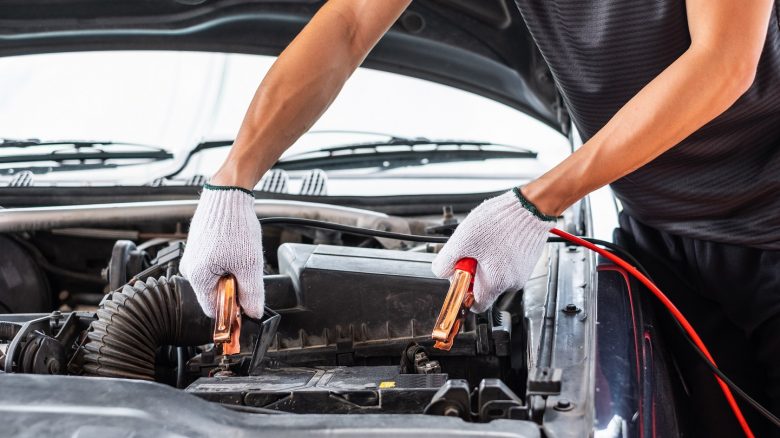Everything around us is obscured in some way. When you look closely, the facts become clearer. Many of us would not be too familiar about a car battery other than the fact that it supplies the current required to start a vehicle.
As a result, it’s important to update your knowledge of certain aspects of a car battery. These things will undoubtedly assist you in maintaining your car battery and making the best use of it.
While assessing various circumstances of car battery utilisation, one critical situation that anyone can encounter is a dead battery.
A dead battery signifies a condition when a battery has lost all its current and cannot provide charge for any other activity, including cranking the engine or running the accessories.
There might be many questions about a dead car battery. We have collected a few of them to shed some light on the facts.
We are backed by expert advice from the UK’s leading mechanics. Without further ado, let us look at the facts.
How Long Does a Car Battery Last?
A traditional car battery in the UK has a dependable and problem-free lifespan of about three years regardless of the warranty.
However, a battery might last longer and be able to serve you for up to five years. But, a battery’s extended life depends on the maintenance and driving habits of the owner.
A car that receives less driving usually experiences an early call for car battery replacement as compared to a car that goes for long drives frequently.
Apart from that, the quality of a battery plays its role; an inferior quality of battery cannot provide expected performance when it is measured against a good quality battery.
However, there would be a difference in the car battery price. A battery may start to show hints if it has started to approach the end of its life span.
You may start to experience a frequent occurrence of a dead battery, especially in the cold winter mornings that you may experience here in Manchester.
How Long Does It Take To Charge A Car Battery?
First question that comes into the mind about a dead battery is the duration of time it will take to recharge back. However, there are alternatives available once there is a situation that demands a recharge of the battery.
It is better to use a car battery charger to get battery back on track. A car battery can typically be fully charged in 2 to 4 hours using a 20 Amp charger while a 4 Amp charger takes 12 to 24 hours to fully charge a dead battery.
The car battery and the charger’s power output have a significant impact on how long it takes to charge. An important thing should you keep in mind that fast charging shortens the life of your battery and can cause damage.
The best way to extend the battery’s life is to charge it for a long time at a low amp rate. However, all these things depend on your requirements, your driving habits, and the general climatic conditions present in the UK.
How Long Does A Car Battery Last Without Driving?
This is common that a battery is charged by an alternator that is driven by an engine. However, there might be some doubt about how much time a battery stands charged without driving after getting fully charged.
A well-doing battery may last up to two weeks if you do not drive it in this period. It can easily crank your engine. On the other hand, you cannot expect this time from an aged battery.
However, you can never be sure about such a battery and when you will have to recharge it or even need a jump start. Even the best automobile batteries eventually start to deteriorate in terms of their performance.
If you won’t alert your workshop on time, there are enough chances of you searching for queries like ‘car battery near me’ on Google.
How to Disconnect a Battery?
If you have been out of station for a considerable amount of time, it is worth to disconnect a battery. An idle battery is not a good idea as it starts to damage when connected with the vehicle.
It might go fully discharged while it will take time to charge it full again. However, you can follow these steps to disconnect your car battery easily.
- Locate the battery: Just open the hood, and a battery is always visible to the eyes easily.
- Identify the negative and positive terminals: The battery terminals are marked with positive and negative mark.
- Select the proper wrench: In most batteries, cables are connected to the terminals with the help of nuts and bolts. Therefore, you need a set of wrenches to make the nuts and bolts loose enough so that they can be removed easily.
- Remove the battery from its place: Once you disconnect the cable, the battery can be easily removed. However, keep one thing in mind; remove any clamp if there is one there to hold the battery.
Hope this explanation sheds enough light on the question that might come to one’s mind. However, a car also needs another battery apart from the normal one under the hood. It is the car’s key battery.
If you have been noticing a dip in performance while centre-locking your car, there is a need for car key battery replacement. You can get all your battery troubles sorted with a quick message to Service My Car.
Service My Car is the UK’s leading car maintenance solution, with online or app booking, free collection and delivery, and so much more, all available on a highly intuitive smartphone app.
From car battery replacement in Manchester, to flat battery assistance in Bolton, we do it all. Book a service package, request a repair quote, or get an MOT test at Service My Car and avail the best car repair Manchester has to offer.

